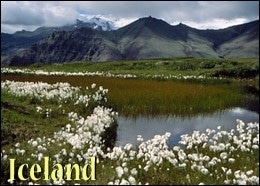Iceland What Is Known For
SIGHTSEEING
There are dozens of spectacular waterfalls here, but Gullfoss, whose massive glacial-fed cascade plunges about 100 feet down a narrow canyon, may be the most spectacular. A footpath from the parking area leads to a viewing platform close to the falls. There, surrounded by lush greenery and spritzed by falls mist, you may feel that you're in this natural wonder. If waterfalls aren't your thing, you can head instead to black-sand deserts, steaming hot springs, active volcanoes, massive glaciers, or an iceberg-filled lagoon.
BICYCLING
Because of the fragile and, in some places, dangerous nature of Iceland's volcanic landscape, both cars and bikes are prohibited from traveling off-road. On the other hand, the island's unpaved tracks (especially mountain roads, which turn to impassable mud in winter) are likely to give even veteran off-road bikers all they can handle. (Advice: Practice your river-fording skills, and be prepared to repair your bike yourself.)
HORSEBACK
Vikings first brought horses to Iceland more than a thousand years ago, and the equine tradition remains a cherished one. The Icelandic horse is small and shaggy but also gentle, hardy, and surefooted. Saddleback tours – of one day or several – are widely available, taking riders through landscapes that range from green grassy plains to black lava fields. (A word to the wise: The breed may bear a passing resemblance to Shetland's diminutive horses, but you won't win points by referring to these animals as "ponies.")
